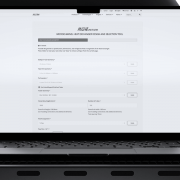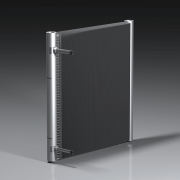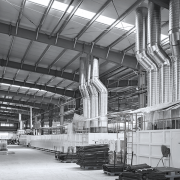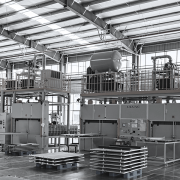Kaltra creates a leading edge with nanoscale coating for microchannel heat exchangers
Aluminum is a cornerstone material in microchannel heat exchangers, valued for its lightweight and corrosion-resistant characteristics. However, safeguarding its longevity is crucial. This is where advanced nanoscale coating technology, newly deployed by Kaltra, emerges as a groundbreaking solution, providing unparalleled protection and extending heat exchangers’ performance life.
Nanoscale coating, the outcome of extensive research, is formulated with tri-chrome, tri-cerium, rare earth metals, inhibitors, and bonding agents (including silane coupling agent). This coating can be applied to both internal and external surfaces of heat exchangers. Internal surface coating is particularly beneficial for air-to-fluid coils, while external surface coating enhances protection for all types of microchannel heat exchangers.
The protection capabilities of nanoscale coating closely match those of electrophoretic epoxy coating (e-coating) while offering several distinct advantages:
- With a thickness of less than 5µm, nanoscale coating preserves the heat exchanger’s thermal conductivity and tubeside pressure drop
- It provides UV protection, safeguarding the exchanger from harmful ultraviolet exposure
- Its hydrophobic properties facilitate easy condensate removal and help maintain coil cleanliness over time
- The ultra-smooth surface, with a roughness average (center line average) of less than 100nm (0.1µm), reduces pressure drops and enhances the exchanger’s appearance. To compare, the roughness average of a bare coil is 0.5µm, and the TCP-coated coil is 0.6µm
Figure 1: Figure 1: Nanoscale coating surface roughness
The nanoscale coating is a low-viscosity aqueous solution free of solids larger than 1µm. It can be applied through two methods: immersion, which is used for coating external surfaces, or flooding, which is used for coating internal surfaces of heat exchangers. The coating process takes 3 to 6 minutes, ensuring smooth deposition of nanoparticles and complete surface coverage. Following this, the solution is drained, and the heat exchanger is thoroughly blown dry.
Kaltra performed SWAAT tests on microchannel heat exchangers treated with nanoscale coating using two aluminum alloy compositions:
- 3F03 Alloy: Heat exchangers made from this alloy withstood 4700 hours of exposure before leakage under a saturator tower temperature of 57°C±1°C and a cabinet temperature of 49°C
- 3F05 Alloy: Heat exchangers with the newly introduced alloy demonstrated improved durability, lasting 6000 hours before leakage was detected
In addition to its protective properties, nanoscale coating significantly enhances the allowable operating range of microchannel heat exchangers by:
- Temperature resistance: extending the operational temperature range for all coil types
- Fluid compatibility: for air-to-fluid coils, it broadens the allowable fluid pH range to 5.0–8.5, compared to the narrower 6.5–7.5 range for TCP-coated coils
These advancements ensure greater versatility and durability across diverse operating conditions.
Headquartered in Germany and Austria, Kaltra designs, develops, and manufactures air conditioning and refrigeration equipment and systems. The company offers air-cooled, water-cooled, and free cooling chillers, precision air conditioners, IT cooling systems, including room-, rack- and row-based solutions, and energy management solutions. It also designs and manufactures air-cooled condensers, dry coolers, and cooling units for special applications. Additionally, Kaltra offers microchannel heat exchangers for condenser, evaporator, and water cooling and heating applications, as well as aluminium coils for small cooling applications. All Kaltra products are engineered with the clear objective of improving energy efficiency and reducing total cost of ownership.
For more information on Kaltra and its products call +49 (0) 911 384 333 48 or visit www.kaltra.com








